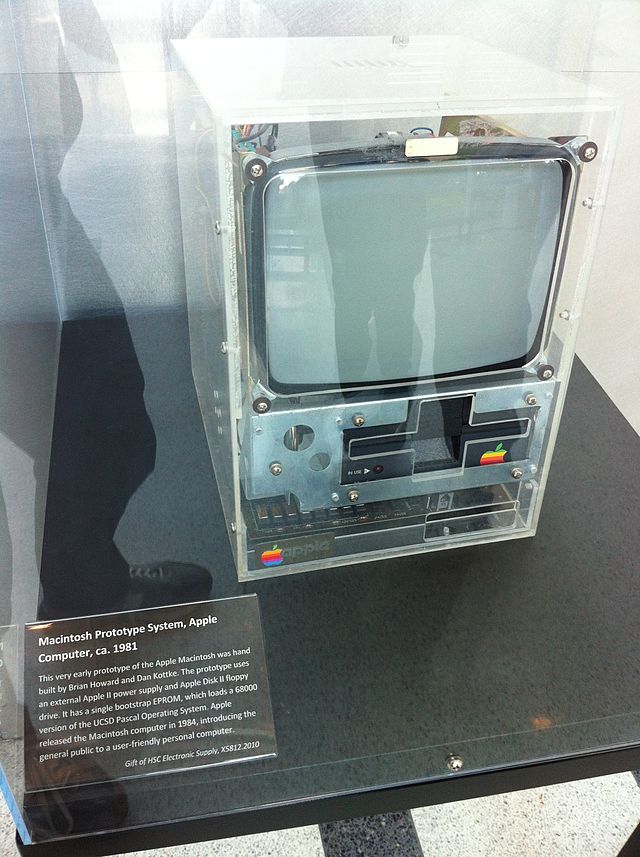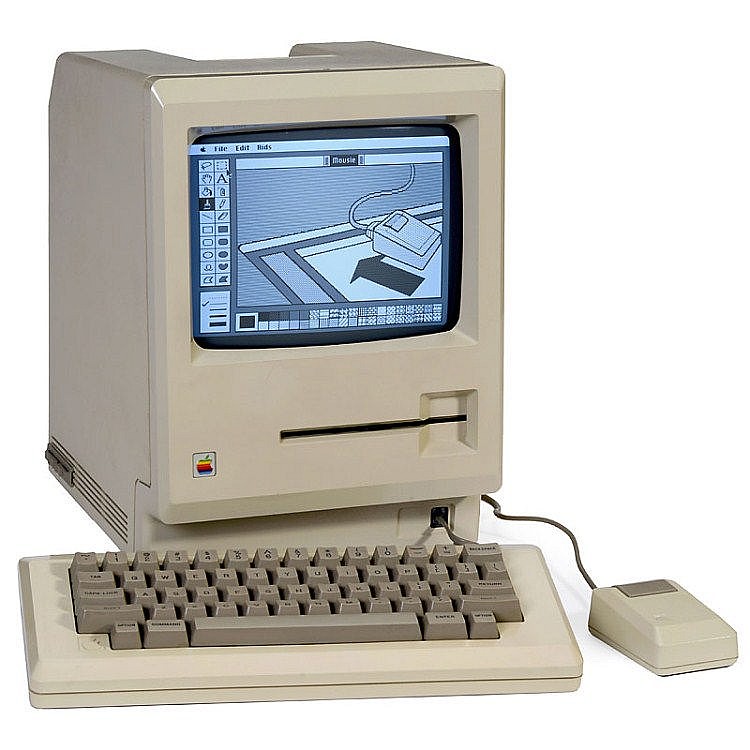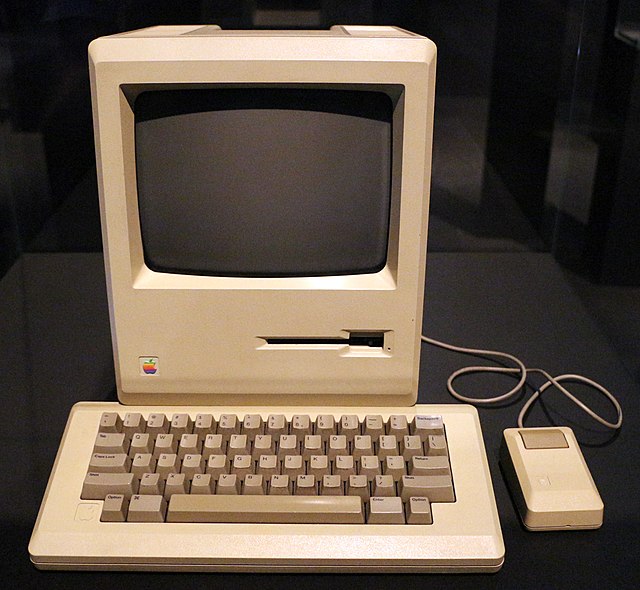A Discovered Art
Just as the Apple II was being remade to have a GUI in 1979, Jef Raskin began work on the user-friendly, cost-conscious Macintosh
project. Rather than a GUI, it was to use a text-based user interface allowing for multitasking, and special keyboard keys for
specific commands in programs. Fellow Macintosh team member Bud Tribble asked Burrell Smith to integrate a 68000 microprocessor
from the Lisa into the Mac so it could run graphical programs. Smith's finished design in December 1980 used less RAM than the
Lisa, so it could be produced at a cheaper price. These factors combined got Steve Jobs' attention, and he took over the Mac
project. He believed that it would be more marketable than the Lisa. Apple co-founder Steve Wozniak also led the project, but he
was on temporary leave due to injuries from a plane crash months earlier, so Jobs had no issue taking it over.

A translucent prototype was made in 1981, within a 5 1/4" drive built into the front of the machine, under the
screen. The reason Apple uses clear cases for their prototypes is to easily check for smoke coming from parts that may be faulty,
and so engineers can determine where to put ventholes to let heat escape from the unit.
The Halfway Unit
With development close to being finished, Apple announced the Macintosh 128K in October 1983. Below is one of two surviving
prototypes that had the 5¼" "Twiggy" drive which the first Lisa model had two of. However, hardware testing for the Mac and
consumer complaints about the original Lisa proved that the Twiggy drives were highly prone to failure. While the Lisa's
reliability and reputation suffered as a result of that issue, its usability wasn't totally hampered since it had a 5 MB hard
drive. The Mac, however, had no hard drive to back it up. So, near the end of development, the Mac was redesigned with Sony's 400
KB 3½" drive.

The Red Hero
On January 22, 1984, during Super Bowl XVIII, the computer was featured in a now-iconic Ridley Scott commercial called "1984". The
commercial involved a female hero that represented the Macintosh's arrival to save humanity from a dystopian future that IBM would
command if they dominated the computer industry. The commercial, not to mention its name, doubles as a reference to a plot George
Orwell wrote about in his novel
Nineteen Eighty-Four, which described such a future commanded by "Big Brother", and
obviously that year having arrived in real life. It was so iconic that the launch of many other technological products were
inspired by the Macintosh commercial of 1984.
The Macintosh was released two days later on January 24 with a word processor called MacWrite and paint program called MacPaint.
IBM released their PCjr in March, but it was outsold by the original Mac, selling 70,000 units by May 3! The Macintosh was sold
alongside the Apple II series until the older machines were discontinued in the early 1990s. Although it was successful, 128 KB
didn't seem to be enough RAM, so a 512 KB variant was released in September. That's when the original was renamed to Macintosh
128K.




